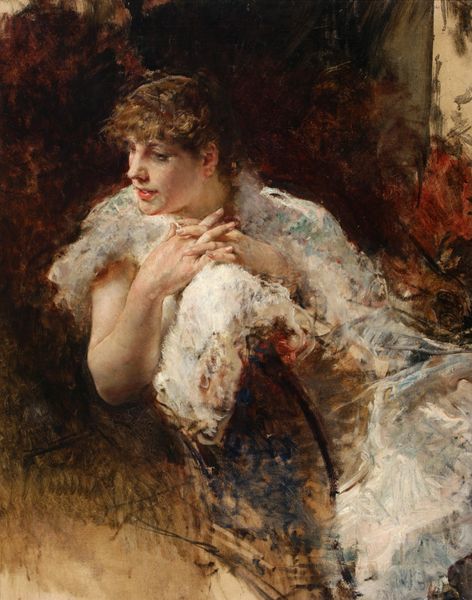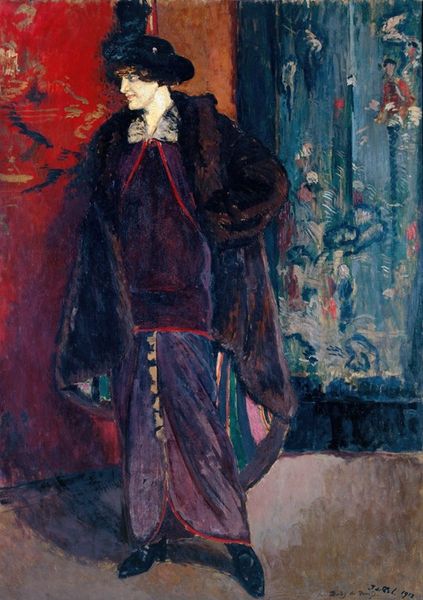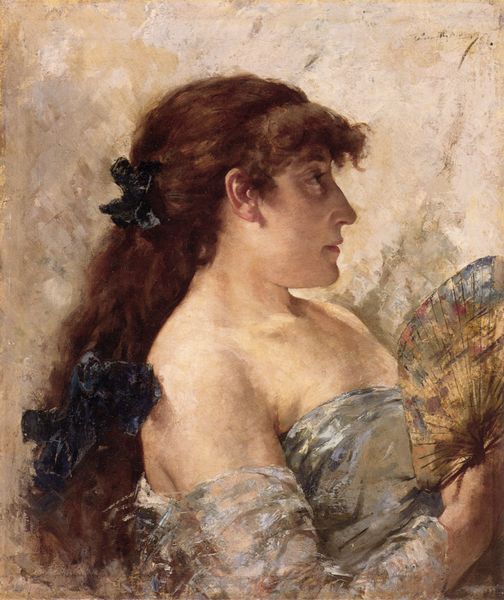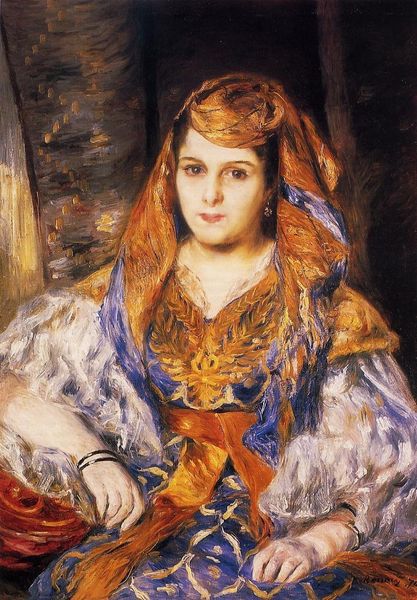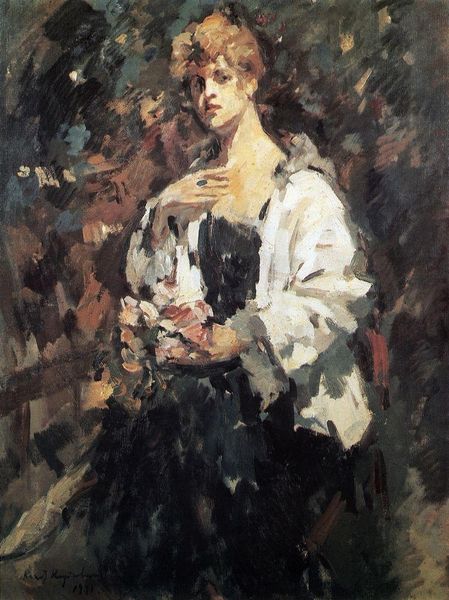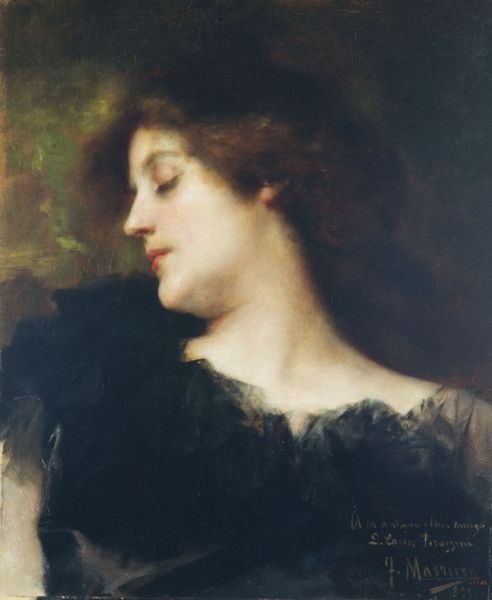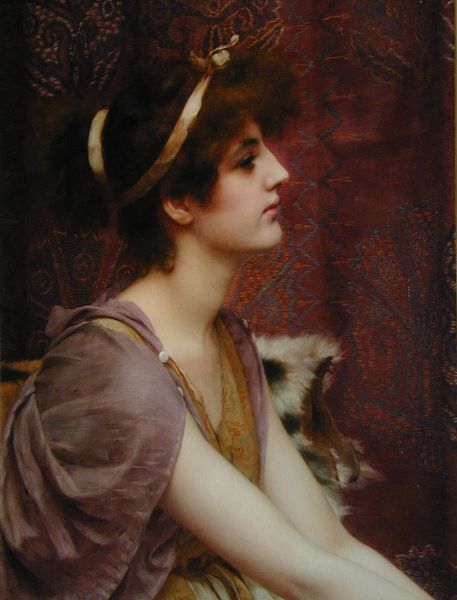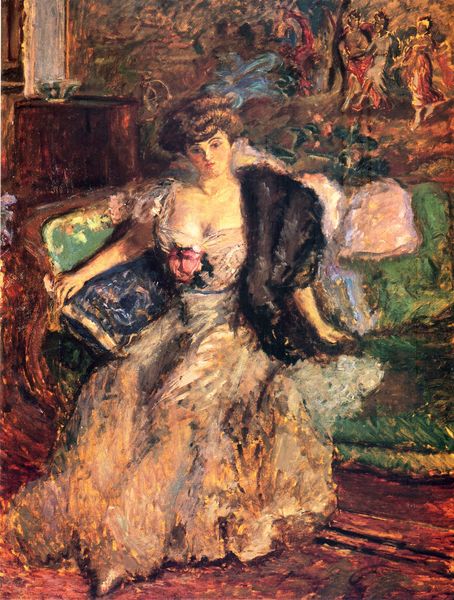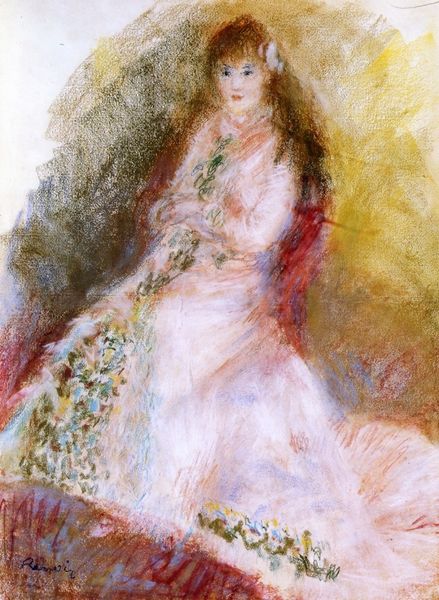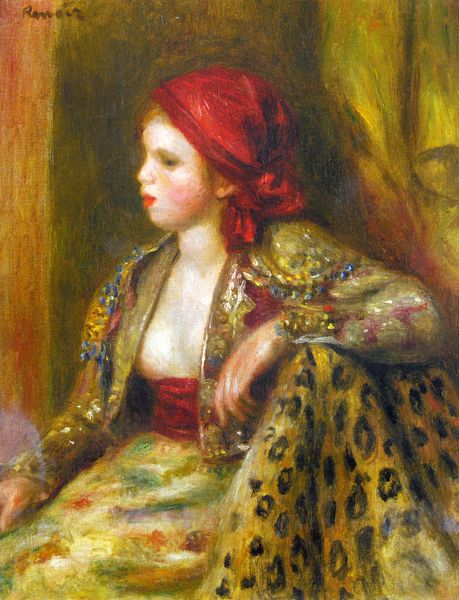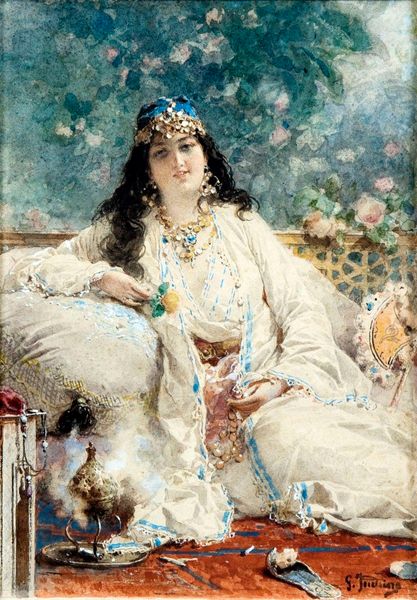
painting, oil-paint
#
portrait
#
painting
#
oil-paint
#
figuration
#
oil painting
#
romanticism
#
genre-painting
#
portrait art
Dimensions: 35.5 x 26.5 cm
Copyright: Public domain
Editor: Alfred Stevens's painting, "A Woman Seated in Oriental Dress," is just gorgeous, and the oil paint practically shimmers! What immediately strikes me is the almost dreamlike quality, yet something about her gaze seems melancholy. How do you interpret this work? Curator: The title is already a huge clue. Orientalism was a major theme in European art of the 19th century, and this work exemplifies how artists appropriated and interpreted "the Orient" – often through a Western lens. Look at how the woman's identity seems almost secondary to the exoticized dress she wears. Do you think it’s a portrait of an individual or the embodiment of a fantasy? Editor: I see what you mean. It does feel more like she's *performing* an idea rather than revealing herself. Is it accurate, though? Or just playing to certain expectations? Curator: That's precisely the critical question. It's less about accuracy and more about constructing a vision, shaped by power dynamics. Europe was expanding its colonial reach during this period. The art from this period often reflected that sense of ownership and control even when portraying the Orient beautifully. Think of it as staging an identity within a larger, unequal global context. How does that change your perception of her “melancholy gaze”? Editor: It makes her gaze even more powerful! It’s a subtle resistance, perhaps. Knowing the painting might be reinforcing colonial attitudes and still recognizing a person looking back. Curator: Exactly. Stevens' painting shows how art both reflects and perpetuates societal norms and hierarchies. By questioning those representations, we see the painting anew, maybe understanding the artist's intentions, but acknowledging its social implications. Editor: That gives me a whole new perspective on not only this piece but on seeing paintings generally, I really learned a lot. Thanks!
Comments
No comments
Be the first to comment and join the conversation on the ultimate creative platform.
